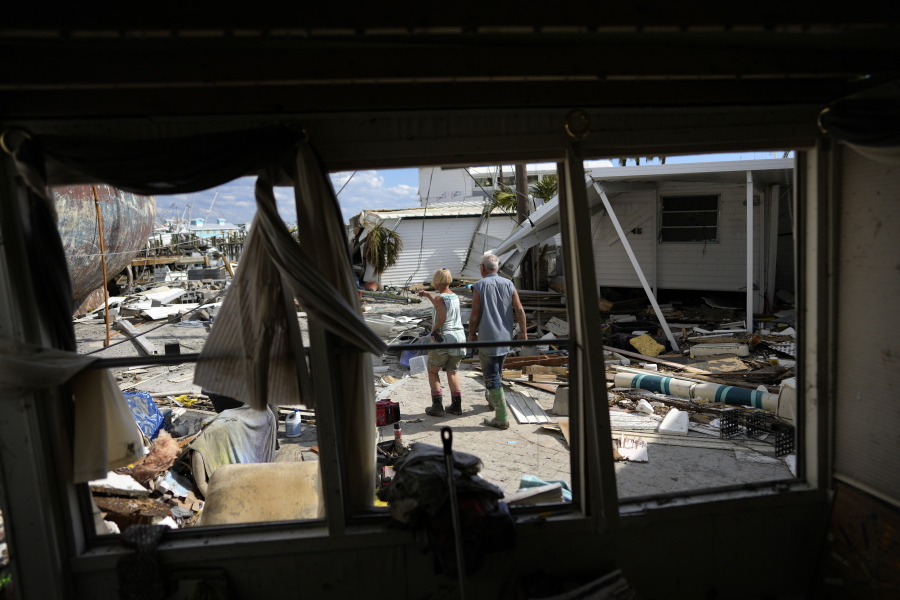FORT MYERS BEACH, Fla. — Shawn Hunte figured he would weather Hurricane Ian the same way he weathered countless storms as a shrimper on the flooded, tilted decks of bucking boats in high seas.
But Ian was “Mother Nature kicking ass,” he said. It swept him in a raging current through his San Carlos Island trailer park to the top of a 15-foot tree, where he clung to the trunk for three hours as a fleet of runaway boats from an adjacent marina floated by.
“I took a beating up there,” Hunte said, pointing to a denuded royal poinciana and an upended Jacuzzi that he used as a platform when it became wedged in the branches while he wielded a leather couch cushion as a shield against flying debris. “The water rose so rapidly, and when it was up to our necks we jumped out the door, grabbed whatever we could find and held on til kingdom come. And it almost did, man, it almost did.”
Hunte’s story of survival was even more incredible given the demolished state of the trailer park surrounding him. He and his 77-year-old uncle live in a 36-foot Jayco camper in Sunnyland — nicknamed “Moneyland” by its working-class residents — hard by Hurricane Bay and the bridge to Fort Myers Beach.



